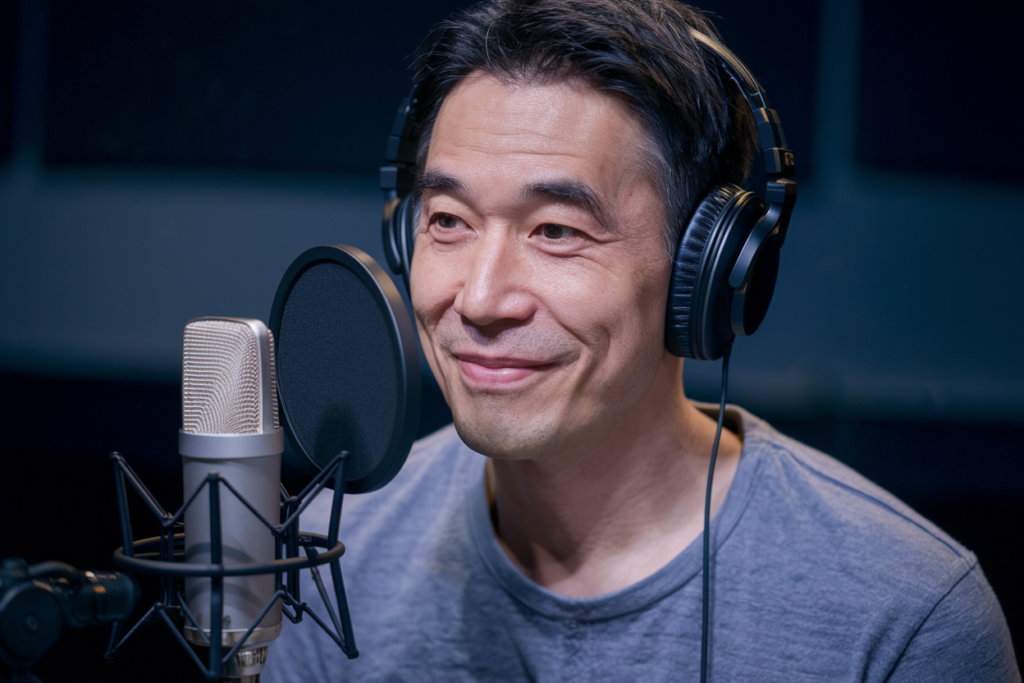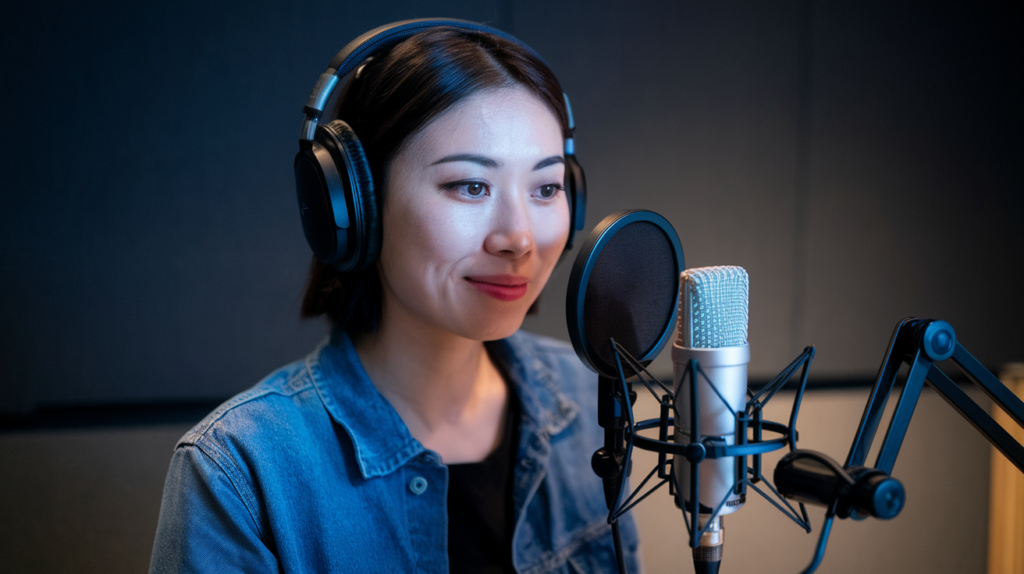Key Takeaways
- Seamless Synchronization: Effective Japanese voice sync is crucial for enhancing viewer immersion by aligning dialogue with character movements and emotional tones.
- Role of Voice Actors: Skilled voice actors infuse depth and authenticity into characters, making it essential to select talent who can convey emotions accurately.
- Cultural Nuances: Understanding cultural context is vital in voice synchronization as it helps bridge gaps between local and international audiences, ensuring relatable content.
- Technical Challenges: Achieving perfect synchronization faces hurdles such as technical limitations and potential cultural misinterpretations that can affect the overall viewing experience.
- Future Trends: Advancements like AI integration, real-time syncing, and enhanced emotion capture are shaping the future of voice sync technology, promising more engaging narratives.
Ever wondered why some Japanese voice sync with video feels so seamless while others fall flat? The art of syncing voiceovers in Japanese media is a skill that can make or break the viewer’s experience. When done right, it adds depth and authenticity to storytelling, drawing you into the narrative.
But achieving perfect synchronization isn’t just about matching words to mouth movements. It’s about capturing emotion and intent, ensuring every inflection resonates with the audience. If you’ve ever struggled with mismatched audio in your favorite anime or film, you’re not alone. Let’s dive into how this intricate process works and why it matters for both creators and fans alike.
Overview Of Japanese Voice Sync
Japanese voice sync plays a crucial role in the media landscape, especially in anime, films, and video games. This process involves matching spoken dialogue to character mouth movements while ensuring that the emotional tone resonates with the narrative. It’s not just about translating words; it’s about capturing feelings and intent that are essential for an immersive experience.
Voice actors bring characters to life through their performances. These talented individuals infuse personality into roles, allowing audiences to connect on a deeper level. The skill of a voice artist lies in their ability to convey emotions effectively, whether it’s excitement during an action scene or sadness in dramatic moments.
When done well, voiceover synchronization enhances storytelling significantly. Viewers often notice when audio doesn’t align correctly with visuals; this mismatch can break immersion and detract from the overall enjoyment. That’s why selecting experienced voice over talent is vital for any production aiming for high quality.
In Japan’s entertainment industry, collaboration between directors and voice actors ensures that every performance meets expectations. This teamwork helps maintain cultural nuances while appealing to both local and international audiences. Properly executed voice syncing creates memorable experiences where viewers feel fully engaged with the story being told.
As you consider your next project involving Japanese media, keep in mind how important effective voice sync is to your audience’s enjoyment. A strong focus on aligning voices with visuals can elevate your content above others and captivate viewers’ attention from start to finish.
Importance Of Voice Sync In Video
Voice sync significantly enhances the viewer experience, especially in Japanese media. Proper synchronization aligns dialogue with character movements, making narratives more engaging and believable. When audio matches visuals seamlessly, you immerse yourself in the story rather than noticing technical flaws.
Enhancing Viewer Experience
Effective voice sync elevates storytelling by conveying emotions genuinely. A skilled voice actor brings depth to characters, allowing audiences to connect on an emotional level. Whether it’s a subtle whisper or an explosive outburst, the right tone transforms scenes into memorable moments. You might recall instances where poor syncing pulled you out of the narrative; that’s how crucial it is for maintaining engagement.
Cultural Context and Language Nuances
Cultural context plays a vital role in voice synchronization. Different languages carry unique expressions and emotional undertones that resonate differently with audiences. A proficient voice artist understands these nuances and adapts performances accordingly. By respecting cultural elements while delivering relatable content, they bridge gaps between local and international viewers. This attention to detail ensures your audience receives not just words but authentic experiences that reflect the essence of the original material.
Techniques For Achieving Effective Sync
Achieving effective sync in Japanese media requires a combination of strategies that enhance audio-visual alignment. Here are key techniques to consider.
Timing and Pacing Adjustments
Timing plays a crucial role in voice synchronization. Adjusting the pacing of dialogue can significantly impact how well it matches character movements. You might find it helpful to tweak the speed of the voiceover so that it aligns perfectly with lip flaps and gestures. This often involves analyzing scene transitions and emotional beats, ensuring that pauses or emphatic moments resonate with visuals. For instance, if a character delivers an intense line, syncing their vocal delivery with facial expressions enhances dramatic effect.
Voice Acting Considerations
Voice acting adds depth to the syncing process. Selecting skilled voice actors who understand timing nuances is essential for creating believable performances. These professionals bring unique qualities to their roles, allowing you to capture genuine emotions tied to the narrative context. When choosing your voice talent, consider their ability to convey subtlety; this aspect can transform an ordinary scene into something memorable. Engaging voice artists familiar with cultural nuances also bridges gaps between audiences, enriching viewer experience through relatable performances.
By focusing on these techniques—timing adjustments and thoughtful casting—you can achieve seamless synchronization that captivates viewers while preserving the integrity of your story.
Challenges In Japanese Voice Sync
Achieving effective voice sync in Japanese media presents several challenges that can impact the overall viewing experience. Understanding these difficulties helps you appreciate the complexities involved in creating a seamless audio-visual connection.
Technical Limitations
Technical limitations often hinder precise synchronization. Voice actors must match their performance to pre-existing animations, which can restrict their expressions and timing. The dialogue’s length might not align perfectly with character mouth movements, leading to awkward pauses or rushed lines. Furthermore, sound quality can vary across different recordings, making it tricky for editors to achieve uniformity in the final product. When you consider these technical hurdles, it’s clear that skilled voice over artists play a crucial role in navigating these issues while maintaining emotional authenticity.
Cultural Misinterpretations
Cultural misinterpretations pose another significant challenge during the voice sync process. The nuances of language often create barriers that complicate accurate translations and expressions. A phrase that sounds natural in English may come across as clunky or forced when translated into Japanese, impacting the overall flow of dialogue. Additionally, cultural references and humor may not resonate with all audiences if they’re not adapted properly by talented voice actors who understand both cultures deeply. By bridging this gap through thoughtful adaptation, voice over talent ensures that the narrative remains relatable and engaging for viewers from various backgrounds.
Future Trends In Voice Sync Technology
Voice sync technology is evolving rapidly, pushing the boundaries of what’s possible in media. You might wonder how advancements impact your experience as a viewer or a creator. Here are some key trends shaping the future.
- AI Integration
AI-driven tools enhance voiceover production by automating synchronization processes. These innovations reduce the time spent on post-production adjustments, allowing voice actors to focus more on performance quality.
- Real-time Syncing
Emerging technologies enable real-time voice syncing during recording sessions. This capability allows voice artists to adjust their performances based on immediate visual feedback, resulting in more natural and engaging interactions.
- Personalized Experience
Customization options for viewers lead to tailored content experiences. With adaptive technology, you can expect personalized voiceovers that align with specific preferences or demographics, enhancing emotional resonance.
- Multilingual Capabilities
As global audiences expand, multilingual voice sync becomes crucial. Advanced translation software paired with skilled voice talent makes it easier to deliver authentic performances across various languages while preserving cultural nuances.
- Enhanced Emotion Capture
New techniques allow for deeper emotion capture in recordings. Voice actors can now utilize advanced tools that analyze emotional delivery, ensuring that every subtlety translates seamlessly into visuals for a richer storytelling experience.
- Interactive Media Demand
The rise of interactive media calls for innovative syncing methods where characters respond dynamically to viewer choices using pre-recorded and adaptable dialogue segments from talented voice actors.
- Remote Collaboration Tools
Remote collaboration tools are gaining traction in the industry, enabling seamless communication between directors and voice talents regardless of location. This trend fosters creative synergy and expands access to top-notch performers worldwide.
- Focus on Authenticity
There’s a growing emphasis on authenticity in character portrayals through diverse voices and backgrounds among talent pools. Audiences appreciate relatable representations that reflect true cultural experiences.
These trends point toward an exciting future where immersive narratives come alive through effective voice synchronization techniques and skilled performers like you’ve never seen before! As these developments unfold, they promise to reshape how stories are told across various media platforms.
Conclusion
Japanese voice sync is essential for creating an engaging and authentic viewing experience. When done right, it enhances emotional connections and makes narratives more relatable. As technology evolves, the methods for achieving effective synchronization are improving, allowing for richer storytelling across various platforms.
By understanding the intricacies of voice synchronization, you’ll appreciate the hard work that goes into making your favorite anime and films come to life. Embracing these advancements not only elevates content but also keeps you captivated from beginning to end. The future of voice sync promises even more innovation, ensuring that every moment resonates with viewers like you.
Frequently Asked Questions
What is voice synchronization in Japanese media?
Voice synchronization in Japanese media refers to the process of matching audio dialogue with character mouth movements and emotional expressions. It enhances storytelling by making narratives more engaging and believable, particularly in anime, films, and video games.
Why is voice sync important for viewers?
Voice sync is crucial for viewers because it ensures that the dialogue aligns with visuals, helping maintain immersion. When audio matches character actions and conveys emotions effectively, it enriches the overall viewing experience.
How do voice actors contribute to successful voice sync?
Voice actors play a vital role in voice sync by infusing characters with personality and emotion. Their ability to convey subtle feelings helps create memorable moments that resonate with audiences and enhance narrative depth.
What challenges are faced in achieving effective voice synchronization?
Challenges include technical limitations where voice actors must align their performances with pre-existing animations. Cultural nuances also complicate translations, as phrases may not always flow smoothly between languages, affecting dialogue delivery.
What are some techniques for improving voice synchronization?
Key techniques include adjusting timing and pacing of dialogues to match lip movements during emotional scenes. Selecting skilled voice actors who understand these nuances can significantly enhance the quality of synchronization.
How is technology changing the future of voice synchronization?
Emerging technologies like AI integration aim to automate syncing processes while allowing real-time adjustments during recordings. This promises more natural performances and personalized viewer experiences through adaptive tech innovations.
Why does cultural context matter in voice sync?
Cultural context matters because it influences how emotions are expressed and understood across different languages. Skilled voice artists adapt their performances to bridge cultural gaps, ensuring that narratives remain relatable for diverse audiences.
What trends are reshaping storytelling through improved vocal alignment?
Current trends include enhanced emotion capture techniques for richer storytelling, multilingual capabilities for global reach, remote collaboration tools improving communication between directors and talent, as well as a focus on authenticity through diverse casting choices.







